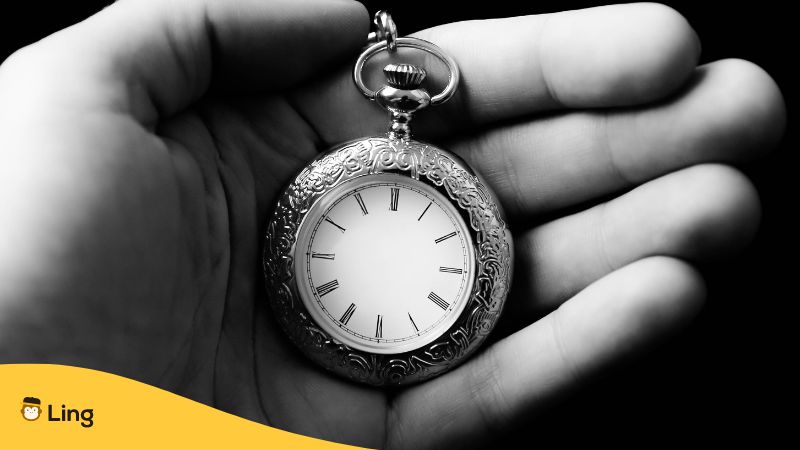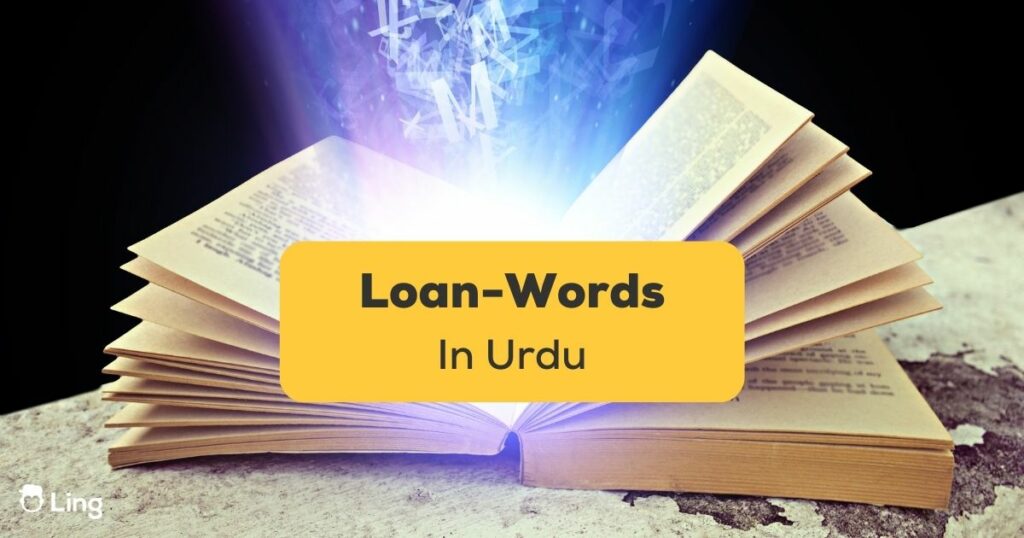Let’s unlock the mosaic of Urdu’s cultural legacy through loanwords in Urdu. Urdu is a tapestry of cultural exchange and historical events woven together to form a vibrant language. In this post, we’ll delve into the history of loan words in this epic language, examine the sources of these unique words, and ponder their impact on the language.
One of the most captivating threads in this tapestry is the multitude of loan words woven into its fabric over time. These loan words, called مستعار منہ الفاظ (muta’ar mu ilfaaz) in Urdu, offer a glimpse into the cultural heritage of Urdu, showcasing the diverse influences that have contributed to its growth and evolution. Let’s get to know more about it in the sections below!

The Timeless Tale Of Loanwords In Urdu
Urdu emerged as a language in its own right in the late 16th and early 17th centuries, originating from a blend of Hindi and Persian dialects. The cultural exchange between India shaped the language and the Persian-speaking world and the Turkic invasions of the region. Over time, Urdu became the preferred language of the Mughal Empire and was adopted by the Indian aristocracy as a symbol of culture and learning.
As Urdu grew in popularity and spread throughout the Indian subcontinent, it absorbed loanwords from various sources, including Persian, Arabic, Portuguese, Turkish, and English. These loanwords expanded the language’s vocabulary and served as a testament to the region’s cultural richness and the multitude of influences that have shaped its history.
The Diverse Sources of Urdu Loanwords
The bulk of Urdu’s loan words comes from Persian and Arabic, reflecting the close historical and cultural ties between the Persian-speaking world and the Indian subcontinent. Persian was the language of the Mughal court and was widely used in India for centuries, leaving an indelible mark on Urdu’s development. On the other hand, Arabic was the language of religion and learning, impacting the region’s culture and language.
Portuguese Loanwords
Urdu also absorbed loan words from Portuguese, reflecting the influence of Portuguese colonial rule in India and the surrounding region. Portuguese was the language of the colonial administrators and merchants, and its impact on Urdu was particularly pronounced in trade and commerce.
| English Translation | Urdu | Romanization |
| Spat | اسپات | Spaat |
| Closet | الماری | Almaari |
| Pineapple | انناس | Anannaas |
| Martol | مارتول | Maartool |
| Key | چابی | Chaabi |
| The Room | کمرا | Kamra |
| The Church | گرجا | Girja |
Turkish Loanwords
Turkish loan words in Urdu reflect the influence of the Turkic invasions of the region. The Turkic conquerors brought their language and culture with them, impacting the region and its language.
| English Translation | Urdu | Romanization |
| Agha | آغا | Agha |
| Apa | آپا | Aapa |
| Urdu | اردو | Urdu |
| Ego | انا | Anaa |
| The Room | اوطاق | Avtaq |
| Envoy | ایلچی | Alchi |
| Sister | باجی | Baji |
| Brave | بہادر | Bahadur |
| Bag | بیگ | Bag |
| Begum | بیگم | Begum |
| A Medal | تمگھا | Tamgha |
| The Mattress | توشک | Toshak |
| Woman | خاتون | Khatoon |
| Khan | خان | Khan |
| Grandfather | دادا | Dada |
| Surma | سورما | Soorma |
| Paradise | سورگ | Swarg |
| Antique | عتیق | Ateeq |
| Control | قابو | Qaboo |
| Alas | قاش | Qaash |
| Qanchi | قانچی | Qenchi |
| The Fry | قلی | Qulli |
| Korma | قورمہ | Qorma |
| Minced Meat | قیمہ | Qeema |
| Tape | ٹیپ | Tape |
| Pasha | پاشا | Pasha |
| Sheet | چادر | Chadar |
| Fat | چاق | Chaaq |
| The Knife | چاقو | Chaako |
| The Silence | چپقلش | Chapqalish |
English Loanwords
English has also played a significant role in shaping Urdu’s vocabulary, especially in recent times. With the rise of British colonial rule in India and the spread of English education and commerce, English became a powerful influence on the language and culture of the region.
| English Translation | Urdu | Romanization | |
| Internet | انٹرنیٹ | Internet | |
| Owen | اوون | Oven | |
| Burger | برگر | Bargar | |
| The Theater | تھیٹر | Theatre | |
| Radio | ریڈیو | Radio | |
| The Head | سر | Sir | |
| Cinema | سینما | Cinema | |
| The Sandwich | سینڈوچ | Sandwich | |
| The Fridge | فریج | Fridge | |
| Fraser | فریزر | Freezer | |
| Flyover | فلائی اوور | Flayi Over | |
| The Film | فلم | Film | |
| Film Set | فلم سیٹ | Film Set | |
| Master | ماسٹر | Master | |
| Mobile | موبائل | Mobile | |
| The Movie | مووی | Movie | |
| No | نمبر | Number | |
| Television | ٹیلیویژن | Television | |
| Period | پیریڈ | Period | |
| Petrol | پیٹرول | Petrol | |
| Chocolate | چاکلیٹ | Chocolate | |
| Chips | چپس | Chips | |
| Computer | کمپیوٹر | Computer | |
| Camera | کیمرہ | Camera | |
| Hotel | ہوٹل | Hotel |
Arabic Borrowings
The Arabic language has also influenced Urdu as many Urdu words have been derived from Arabic words and therefore are of Arabic origin. Islam and Islamic scholars from Arab have played a significant role in this regard.
| English Translation | Urdu | Romanization |
| Last | أخر | Aakhir |
| Literature | أدب | Adab |
| The First | أول | Awal |
| Human Being | انسان | Insaan |
| Door | باب | Baab |
| Fever | بخار | Bukhaar |
| Badr | بدر | Badar |
| Change | بدل | Badal |
| House | بيت | Beeet |
| Reply | جواب | Jawab |
| Ruling | حكم | Hukm |
| Hakeem | حكيم | Hakim |
| Well | خير | Kher |
| Dar | دار | Daar |
| Taste | ذوق | Zouq |
| Irfan | عرفان | Urfan |
| Pen | قلم | Qalam |
| The Book | كتاب | Ktab |
| Available | ميسر | Muyassar |
| Noor | نور | Noor |
| Time | وقت | Waqt |
| Day | يوم | Yom |

The Imprint of Loanwords on Urdu
Loanwords have had a profound impact on Urdu’s development and evolution. They have expanded the language’s vocabulary, enabling speakers to express a broader range of concepts and ideas. Furthermore, they serve as a testament to the region’s cultural richness and many influences that have shaped its history.
As Urdu emerged as the lingua franca of the Indian subcontinent, it embraced loanwords from various regions and cultures, seamlessly weaving them into its fabric. This integration played a crucial role in fostering a sense of national identity, creating a shared vocabulary that transcended regional and linguistic boundaries. A shared cultural heritage was formed, bridging the gap between the region’s people, despite their diverse backgrounds.
Whether they hail from Persian, Arabic, Portuguese, Turkish, or English, these loanwords serve as a testament to the timeless legacy of Urdu and the contributions made to its growth throughout history.
How Should You Learn Urdu? Try The Ling App!
Studying loanwords in Urdu is an enthralling and enlightening journey, offering a glimpse into the cultural heritage of the language and the influences that have molded it over time. Whether you’re a language student, a fan of Urdu literature, or fascinated by the cultural heritage of the Indian subcontinent, exploring the loanwords in Urdu is sure to be an enriching experience. And the best way to do that is through the Ling app.
Want to learn more? Check Ling to master and speak the Urdu language like a pro. Download the Ling app from Google Play Store or App Store, and sign up for an account to start learning Urdu! Happy learning!
Enjoyed this post? Read these to learn about giving directions in Urdu and interesting Urdu Books.





















